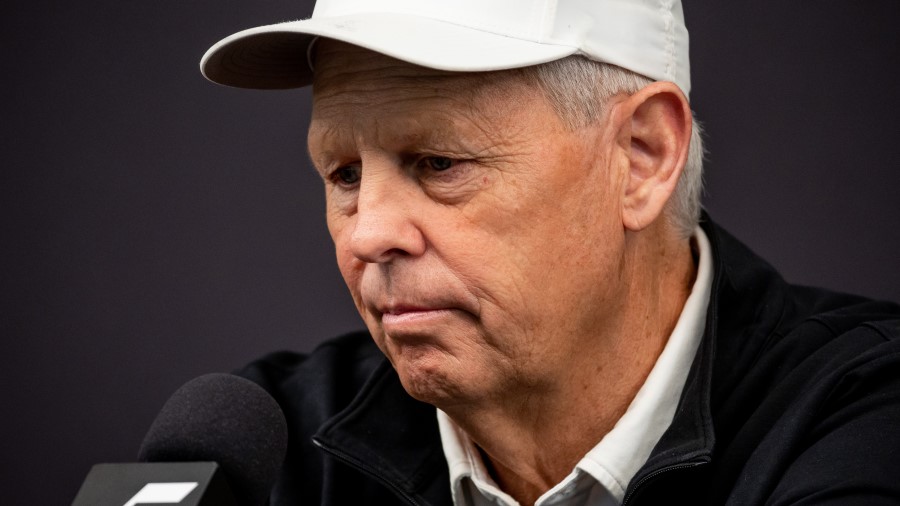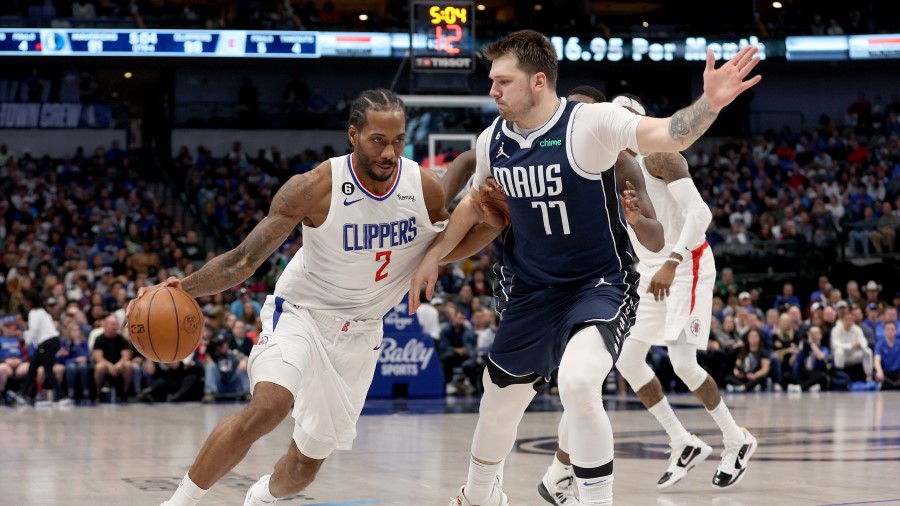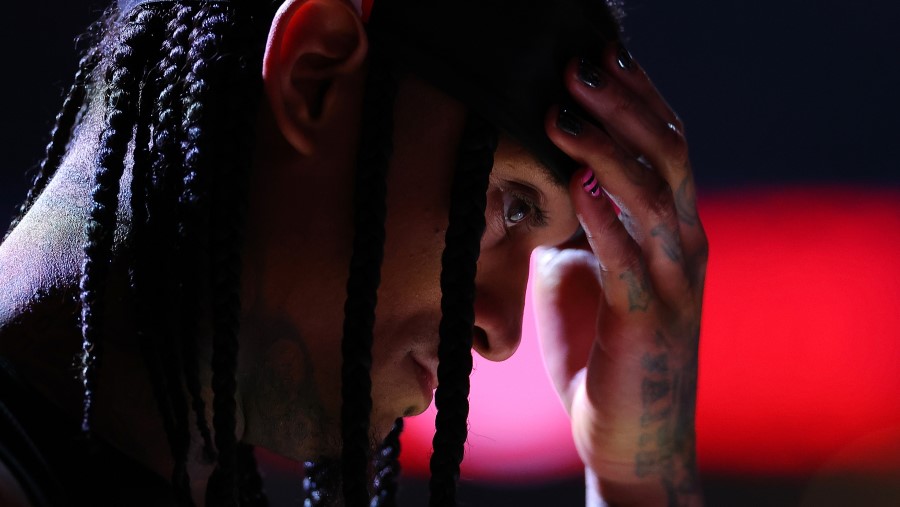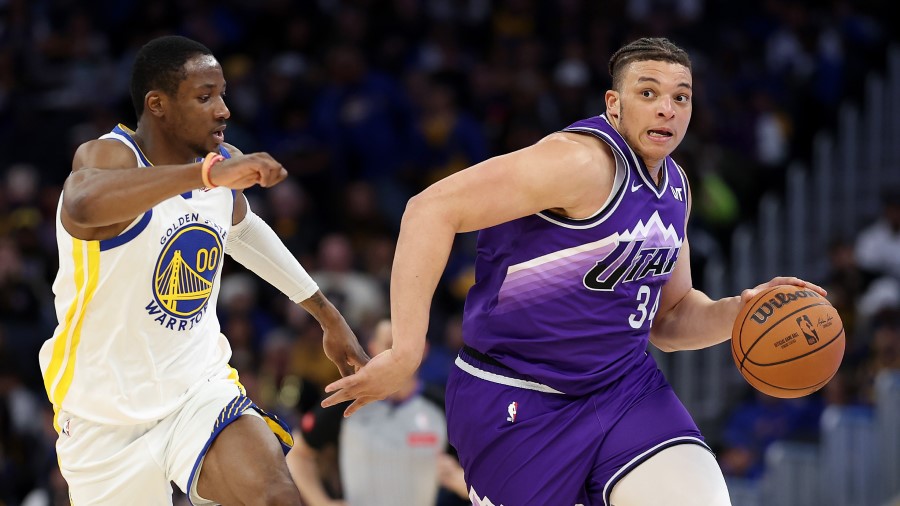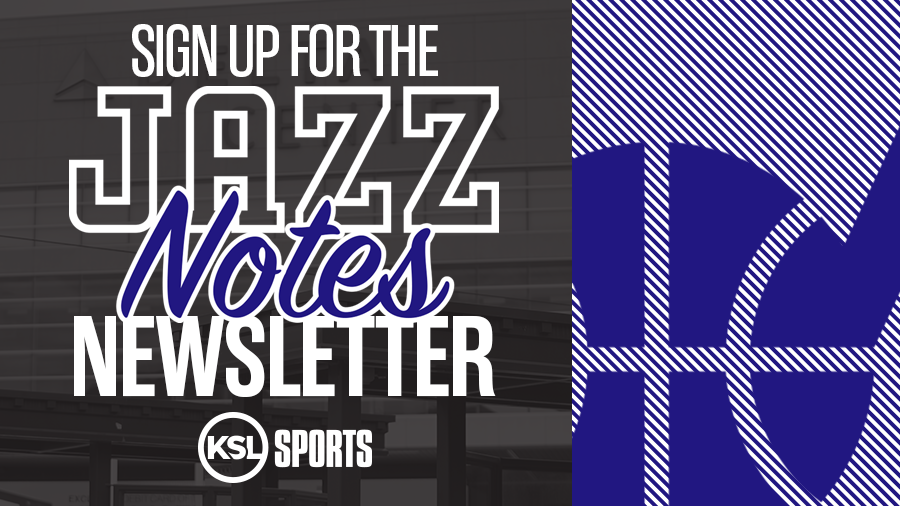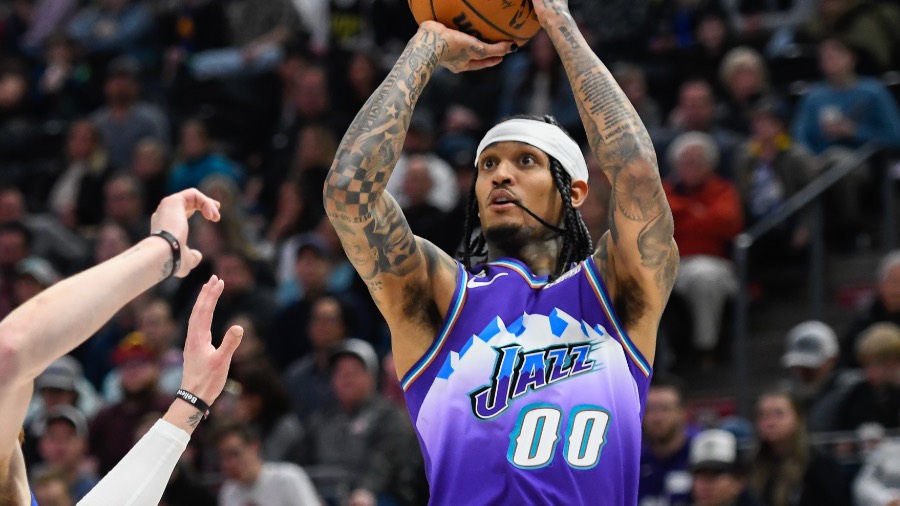Utah Jazz NBA Draft Prospects: Stanford Guard Tyrell Terry
Sep 15, 2020, 2:59 PM | Updated: Nov 12, 2020, 11:43 am
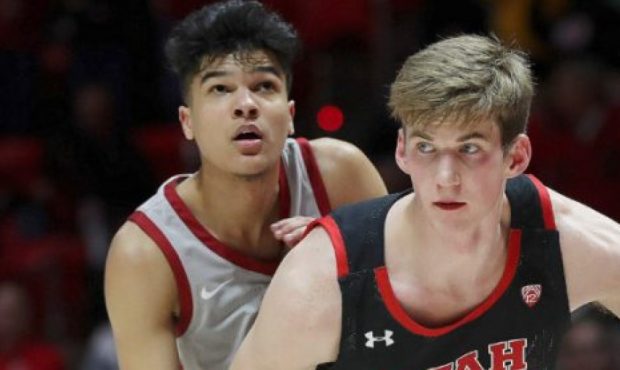
Stanford guard Tyrell Terry (Jeffrey D. Allred, Deseret News)
(Jeffrey D. Allred, Deseret News)
SALT LAKE CITY, Utah – As we continue the examination of NBA draft prospects that could help push the Utah Jazz closer to contender status, we look more closely at Stanford freshman guard Tyrell Terry. The Jazz own the 23rd pick in the draft, and the talented freshman is projected to be selected somewhere in the mid-first to early second round.
The NBA draft has been rescheduled from its October 16 date and is tentatively set for November 18. The Jazz first-round pick is their selection in the draft after trading their second-round pick to the Cleveland Cavaliers in exchange for Kyle Korver in 2018.
Tyrell Terry: 6’2, 160 lbs PG/SG – Fr – Stanford
14.5 points, 4.5 rebounds, 3.2 assists, 44% FG/40% 3p/89% FT
Pros:
Tyrell Terry proved to be a floor bending shooter in his lone season at Stanford, spacing the court well beyond the NBA three-point line both as a spot-up shooter and off the dribble. It’s hard to watch Terry’s game and not immediately make comparisons to guys like the Golden State Warriors Steph Curry and Atlanta Hawks Trae Young.
It’s clear Terry has studied each player’s game beyond their shooting, and it translates in his overall offensive attack. Terry looks like the modern scoring guard who has modeled his game with the belief that there are no bad three-point shots.
First, Terry looks to build his offense from the outside in, hunting three-point looks as soon as he crosses half court. The freshman comfortably dribbled into pull-up threes, maneuvered off ball screens for three-point looks, or ran to find off-ball opportunities on curls on the perimeter. When the defense did adjust, he used a crafty package of shot fakes and side steps to find easier looks from distance.
Had a great time breaking down film with Stanford PG and potential 1st round pick Tyrell Terry. High-level shooter with a strong feel for the game and excellent passing instincts. We talked about his path, studying the top NBA PGs, & much more. Stay tuned for the final product. pic.twitter.com/96UWSvbKeD
— Mike Schmitz (@Mike_Schmitz) August 17, 2020
When defenses do take away his deep shot, Terry shows an adept ability to get into the paint and finish. It’s apparent in the guard’s finishing ability at the rim that he’s comfortable playing against bigger defenders. The freshman understands timing, release points, and up and under moves to get his shot off against significantly bigger opposition.
Additionally, when Terry was trapped either above the three-point line or near the hoop, he showed a strong ability to find cutters for easy baskets. The freshman made regular highlight reel passes in just 31 games at Stanford that reflected an understanding of unique angles created by his ability to stretch the floor.
In transition, Terry looks for pull-up three-point opportunities first, but is a willing passer, and aggressively pushes the ball up the floor. He lacks elite speed and quickness like some of the smaller guards in the NBA, but his extremely high basketball IQ allows him to beat the defense with a unique understanding of angles on the floor and his dribble counter moves.
Cons:
The first test for those watching Terry is to dismiss the unreal and unfair comparisons to Curry and Young at the NBA level. While the freshman has clearly modeled his game to look like both players, his production is nowhere near what either of the two current NBA All-Stars accomplished in college.
Curry averaged more than 21 points per game all three years at Davidson, while Young averaged 27 points per game in his lone season at Oklahoma. Both players did it while facing double and triple teams for long stretches of games.
Terry’s style of game lends itself to those comparisons but is far more likely to resemble Seth Curry or Landry Shamet at the NBA level. While both are good rotational guards in the NBA, neither have proven an ability to change the game like the older Curry sibling or the sophomore All-Star in Atlanta.
Tyrell Terry, 24 points vs. ASU, 2/13/20
Positives: Handle/footwork work for shot-creation and finishing. Good passer. Versatile shooter.
Negatives: 160 lbs on D, opponents were able play over/thru him. Takes a lot of energy for him to get his shot without size/bounce. pic.twitter.com/5CcM9qqB2c
— Jonathan Wasserman (@NBADraftWass) April 6, 2020
Unfortunately where Terry’s game does resemble those lofty counterparts is on the defensive end where his lack of size will be a major hurdle to overcome for the first several years of his basketball career.
Standing just 6’2 and 160 lbs, Terry will be targeted by opposing offenses every time he steps on the floor just as he was in college. The lesser opposition had success against Terry at the college level and that will only be magnified at the NBA level.
Bigger offensive players have success using their strength to push past Terry, while quicker players take advantage of his average athleticism. Too often Terry gets caught ball watching defending off the ball and gets beat on back door cuts for easy layups.
His ability to read passing lanes made him proficient in the steals category where he averaged 1.4 takeaways per game, but he won’t have the ability to gamble as he did at Stanford in the NBA.
How Terry Fits With The Jazz In The NBA Draft
The Jazz offense responded well to the additions of shooters Bojan Bogdanovic and Mike Conley this season. Coach Quin Snyder’s offense is designed to manufacture as many good three-point looks as possible, opening driving lanes for guard Donovan Mitchell and easy finishes for Rudy Gobert.
Terry’s ability to space the floor both from the corners and on above the break three-point shots would fit well into the Jazz system and could provide additional play and shot-making as Conley and Ingles dwindle into the twilight of their careers.
"I'm not sure what else I need to say about Tyrell Terry… he plays with confidence, plays at his own speed & takes on the challenge every night."
Another special one for @tyterry05 on Wednesday with a career-high 27 #GoStanford pic.twitter.com/luesv1cE8s
— Stanford Men's Basketball (@StanfordMBB) February 29, 2020
Shooting will continue to be at a premium in the NBA, and finding proven shooters on cost-controlled contracts for the next seven season’s hardly seems like a bad decision when so much o the draft remains an imperfect science.
However, as much as the Jazz benefited from Conley and Bogdanovic’s shooting this season, the team drastically missed the defensive integrity provided by both Ricky Rubio and Derrick Favors. The Jazz front office signaled a desire to add more defenders while maintaining the league’s second-best shooting roster, and Terry only checks one of those boxes.
The Mitchell and Conley backcourt is already one of the smallest units in the NBA and adding Terry would do little to fix that. While Terry could provide insurance for the Jazz if Conley leaves in the roster in the summer of 2021, the Stanford product doesn’t alleviate the team’s size issues.
Overall Terry is a tantalizing prospect due to his offensive upside as an elite shooter and playmaker, but his lack of size and defensive question marks may drop him behind other prospects available late in the first round.
Additional Prospect Breakdowns:

